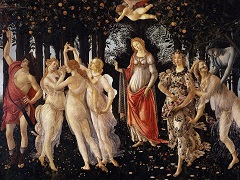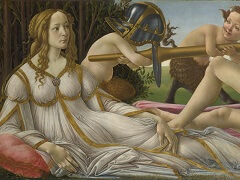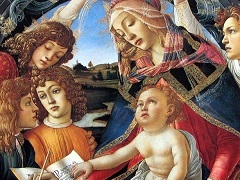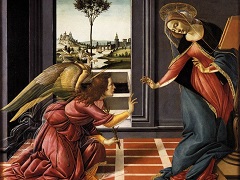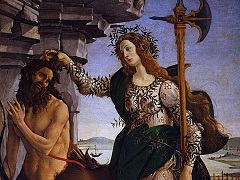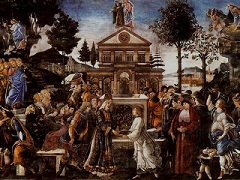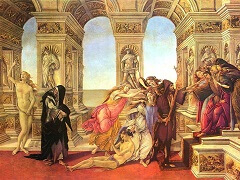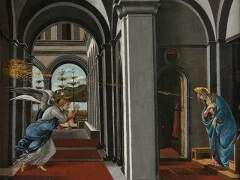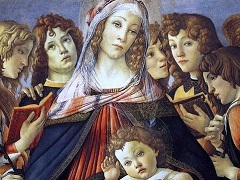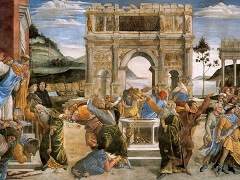10 Facts You Don't Know About The Birth of Venus
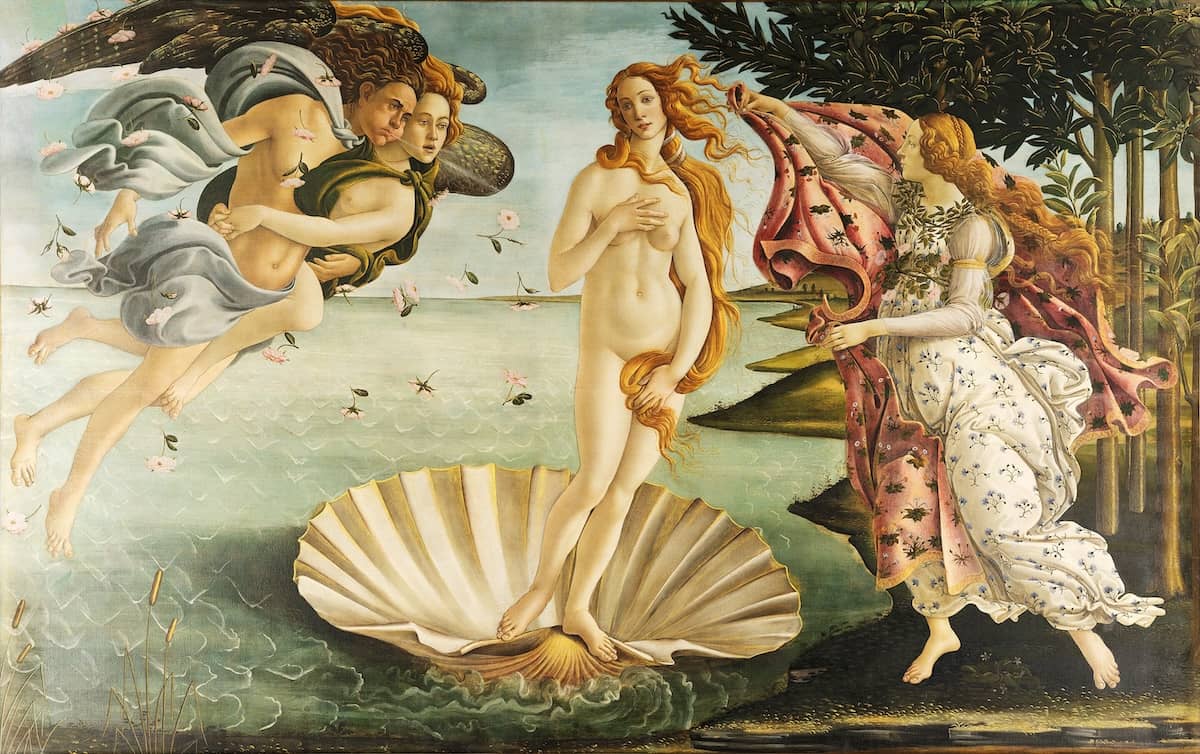
Botticelli's famous painting of The Birth of Venus was executed in the middle of the 1480s. At the start of the 16th century, the painting hung together with
Primavera in the country villa of the Medici in Castello.
Venus is standing in the centre of the picture on a seashell floating in the water: according to classical mythology, she sprang from the foaming waters of the sea. This froth had formed around
the genitals of Uranus, God of the Sky, his son Cronus having cut them off and thrown them into the sea as an act of revenge for the cruelty perpetrated by his father. The figure of Venus appears
in Botticelli's painting almost like a classical statue. The hard modelling of the white shimmering flesh colour is reminiscent of marble, while her posture recalls the classical sculpture of
Venus Pudica, modest Venus. Botticelli has gone over the contours of the figure with a black line, causing them to stand out sharply from the surface of the picture and emphasizing their curious
clarity and coldness. Roses are floating down from the sky: according to classical legend, their origin coincided with the birth of Venus.
Botticelli's art was never fully committed to naturalism; in comparison to his contemporary Caravaggio, Botticelli seldom gave weight and volume to his
figures and rarely used a deep perspectival space. In The Birth of Venus, Venus' body is anatomically improbable, with elongated neck and torso. Her pose is impossible: although she
stands in a classical contrapposto stance, her weight is shifted too far over the left leg for the pose to be held. Moreover, her positioning on the edge of the scallop shell (which cannot be
identified as real), would certainly cause it to tip over. The bodies and poses of the winds to the left are even harder to figure out. The background is summary, and the figures cast no shadows.
It is clear that this is a fantasy image.
10 Facts You Might not Know about the Masterpiece
1. Botticelli set a new precedent with his painting "Birth of Venus." He rendered the work on canvas. This was a departure from the plank paintings and frescoes the other masters of his day worked with. In fact, because
canvas was a cheaper material, many contemporaries considered it inferior. Botticelli was the first artist in Tuscany to paint on canvas.
2. The Italian artist also set a new standard with the size of the painting. "Birth of Venus" measures a whopping six by nine feet. Prior to this work, it was the norm during the Renaissance to paint individual works on a
smaller scale.
3. Unlike his contemporaries such as Leonardo da Vinci, Botticelli chose to delve further into the past for his subject matter in the "Birth of Venus." While da Vinci was sourcing
the Christian tradition for his art, Botticelli tapped into ancient Greek mythology.
4. The artist did not achieve public acclaim until four centuries after his death. It is no surprise that more popular High Renaissance painters such as Michelangelo, who was working
on high-profile frescos on the the Sistine Chapel Ceiling, claimed the contemporary imagination of the day.
5. Modern technological testing reveals some of the revisions the artist made on his way to the final artwork. The Hora, or Spring goddess, to the right of Venus once wore sandals. The hair of Venus, Zephyr to her left and
the goddess in his embrace also underwent transformation.
6. Venus' hair can be seen blowing in the wind (personified by the beings surrounding her), with some locks gathering on her shoulder. Upon closer inspection, an observer can see that the hair on her right shoulder wraps
into a beautiful spiral. But that is not just any spiral. It is a perfect logarithmic spiral, discovered decades later as a naturally-occurring natural spiral also known as "the marvelous spiral."
7. The title of the painting, "The Birth of Venus," is not wholly accurate. It actually depicts the mythical events following her birth. However, this title is not original to the painting. It was added in the 19th century
when people began taking notice of Botticelli's work.
8. Botticelli added golden touches after the painting was finished and framed. He highlighted the wings of the wind deities, the hair of the figures, their robes, the shell and some of the landscape elements.
9. Some art experts consider the wind deities to be the shining stars of the painting. The flow of their robes and the fluidity of their embrace creates a lovely mini-tableau.
10. "Birth of Venus" was ordered as a wedding gift for the cousin of Giuliano Medici and his brother Lorenzo. Due to its intended purpose and its unconventional nudity, it did not enter the public domain until many years
after its completion. Instead, it hung above the new couple's marriage bed.


